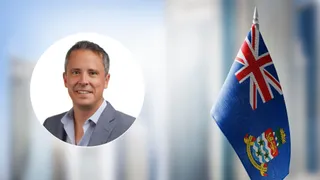
Use of captives to enhance employee benefits plans rocketing
There has been a rapid growth in the use of captives to manage employee benefits (EB) programmes, as more operators realise their potential to advance their DE&I (diversity, equity and inclusion) strategies, a new report by MAXIS GBN has claimed.
The report, called Employee benefits networks in 2024 and beyond, examines the trends in this space, and how the narrative has shifted. An EB network brings together local insurance providers from countries around the world, enabling multinational companies to provide employee benefits for their people in whatever local markets they operate in. MAXIS GBN is one of eight employee benefits networks in the market, connecting multinational clients with local insurers around the world.
But the report also emphases the increased use of captives. “We can’t talk about the future of EB networks without talking about captives. Traditionally, captives have been a solution used for property and casualty business. However, over the last decade, the benefits of writing EB risks into a captive are being recognised, with more centralised multinationals being able to retain underwriting profits and gain greater control over both pricing and their EB offering in doing so,” the report said.
Paul Lewis, chief business development officer at MAXIS GBN, said: “I think the biggest trend that we’ve seen over the past five years is the continued and increasing evolution from traditional multinational pooling to the newer financing strategies, such as captives, with captives utilising the networks as their fronting partner for employee benefits.
“Traditionally the main reason to put EB in a captive was to manage risks, or as a cost control vehicle, but in the last few years, and especially since COVID, the additional benefit of having more plan design flexibility is front and centre. We’re seeing more multinationals entering the EB captive space to advance their DE&I (diversity, equity and inclusion) strategies and provide cover for the things that matter most to their people.”
Nicola Fordham, chief underwriting officer at MAXIS GBN, added: “There has been a big change in the motivations behind writing EB in a captive over the last five years. The key driver was initially underwriting profit, but now multinationals are worrying less about making money from a captive and more about doing the right thing for their people.
“Of course, some companies are primarily focused on profit, but there has been a real shift towards providing the cover that employees truly want and need. "Employers are looking to achieve a global minimum standard of benefits for their people, and this is something that a captive enables.”
And the growth of captives isn’t slowing down. Tom Levi, International Employee Benefits Consultant at WTW, shared his thoughts. “Over the next five years I’d expect to see more multinationals using their captives to achieve globally uniform EB plans, helping to meet both their DE&I commitments, and the individual needs of their people. I think that employers will be looking to provide the most consistent coverage possible to all employees, regardless of where they live and despite barriers created by local insurance policies.”

